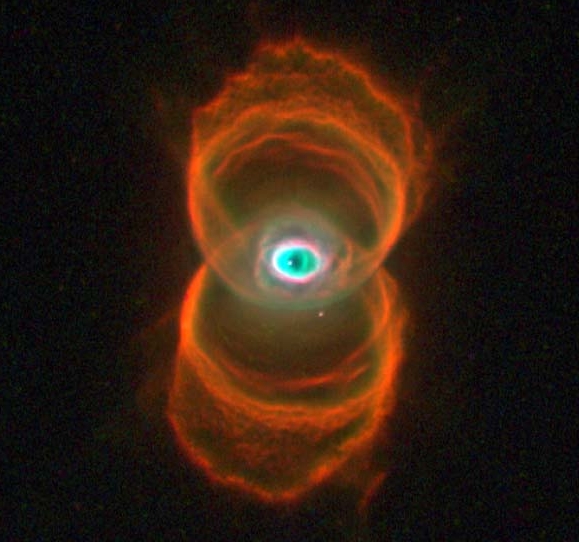This Week’s Finds in Mathematical Physics (Week 261)
Posted by John Baez
In week261 of This Week’s Finds, learn about the Engraved Hourglass Nebula:

Then read an ode to the number 3, which explains how all these entities are connected:
- the trefoil knot
- cubic polynomials
- the group of permutations of 3 things
- the three-strand braid group
- modular forms and cusp forms
The discussion of modular forms here harkens back to this blog entry. I hope to keep explaining modular forms from more and more viewpoints as I keep learning about them in my coffee-fueled chats with James Dolan. This is just the beginning…
I’m going to Singapore the day after tomorrow. My presence here will be fitful at best until I return to Riverside on Thursday March 27th.
In the meantime, here’s a challenge. What are all the ways the trefoil knot shows up in mathematics? What is the most profoundly significant?

My guess for the most profoundly significant is explained in This Week’s Finds.
And here’s another puzzle I don’t know the answer to. Can one exploit the relation between the knot quandle of the trefoil and the vector cross product in 3 dimensions to do something interesting? This knot quandle has 3 generators and and 3 relations:
When we turn it into a group we get the fundamental group of the trefoil complement, or the 3-strand braid group, as explained This Week.

Re: This Week’s Finds in Mathematical Physics (Week 261)
Hi John,
This book on modular forms you posted, http://www.math.lsa.umich.edu/~idolga/modular.pdf, are missing the pictures. I use the free acrobat 7, but since that file is from 2005, i don’t think it is my adobe’s reader fault…